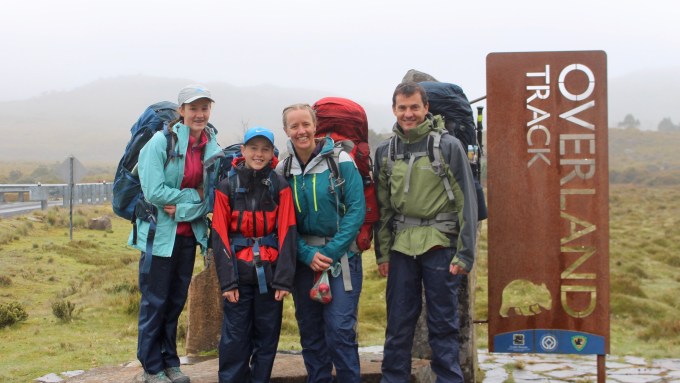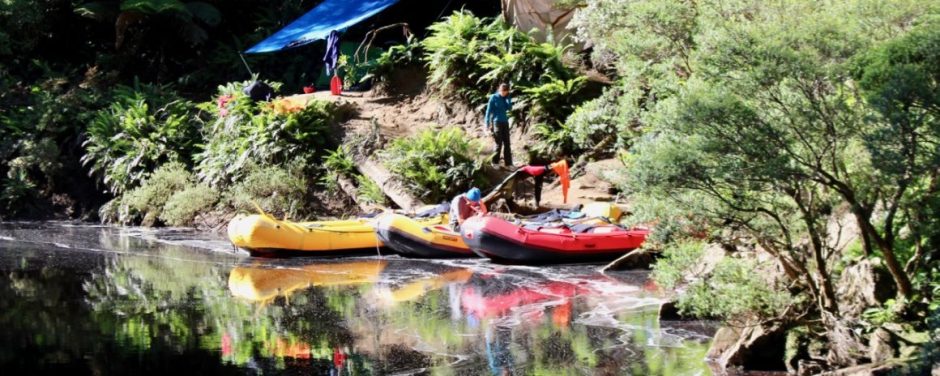We flew to Launceston after a few mad days. Emma and I ran around like two people who work too much, sit too little and won’t stop until someone turns the music off. So much… More
Two weeks in En Zed
‘Hey Oliver’ I said. ‘I’m beached ez bro’.
‘Huh’ Oliver replied. Without even looking up.
‘Beached Az’ is an ABC cartoon where a whale washes up on the shore and declares himself ‘beached az’ to a seagull. Humorous conversations ensue in thick New Zeland accents. Check out this link if you have no idea what I was on about.
We were on a plane from Sydney to New Zealand at the time. I was in a good mood and whatever silly Kiwi thing I thought of was tumbling out of my mouth. Oliver meanwhile was teaching himself how to solve the Rubik’s cube by studying a book on speed cubing and had no idea what I was talking about. He had no interest in my silly Kiwi ramblings.
I thought of telling the customs officer in Queenstown that I was ‘beached ez’ too, but before I could he asked why we were visiting New Zealand. ‘We’re here for a bungee jumping conference’, I told him proudly and then I demonstrated my technique for taking the plunge, flinging my arms back and my chest forward as I had planned in my mind. Emma, Amy and Oliver tried to look as if they didn’t know me but I didn’t care. The customs man chuckled and stamped our passports but I don’t think he thought I was there for a bungee conference.
We had two weeks in New Zealand. Two weeks. Last time we went travelling it was for 52 weeks! How can you see everything in two weeks? You can’t. Not even in little New Zealand and so we were forced to limit our ambitions to Wanaka, Mount Cook, Lake Tekapo, Queenstown, Te-Anau and the Milford Track. And somewhere along the way I was determined to jump off a bridge…
In Wanaka:
- On the shores of Lake Wanaka I got jumped on by a wet dog two seconds after pulling into a carpark and opening the door of the car. It was a skittish kelpie scared witless by a paraglider and desperately seeking refuge… on my lap.
- We rode bikes around the lake, beneath the beautiful mountains, stopping to picnic and then swim in the lovely but cool water. As we went we pondered how to pronounce Te-Anau. Is it Te-ah-no? Or Te-oh-no? Or Te-ah-noo?
- We spent way too much time at the local supermarket because the effort of thinking ahead to the next meal was too much for us and this meant we kept retuning every three hours. This is not a good thing because supermarkets are not very exciting and this one was not big enough to cater for all the tourists.
- We visited Puzzle World, which is a fun tourist trap with a huge maze, a wall of faces that follow you when you move around and a room built on a 30-degree angle but which looks normal. It made me feel sick.
- I got a speeding ticket, which isn’t as bad as it sounds because New Zealand charges about two thirds less than Australia for speeding. I know this because I got another one just recently less than a kilometre from home.
- We hung out at the Wanaka Tree. It’s one of New Zealand’s most photographed sites, because it’s pretty, which is an odd thing to say because most of New Zealand is pretty. So many people visit the Wanaka tree that there is a fellow who wheels in a piano on a mobile platform to entertain the crowd and sell CDs.
- We took a drive (at the speed limit – for the most part) for an hour and a half out of town because I wanted to visit the Blue Pools. The Wanaka visitors guide said,
‘An easy short walk through mature beech and podocarp forest leads to these natural wonders of pure glacial water gathered from the mountains’. But when we got there, the Blue Pools were thick, muddy and grey because it had rained the night before and that’s what happens to New Zealand’s rivers when it rains. Still, what a great Podocarp forest. Yep, you’ve got to love a Podocarp forest. Emma and I thought it was a nice drive even though Amy and Oliver thought it was too long.
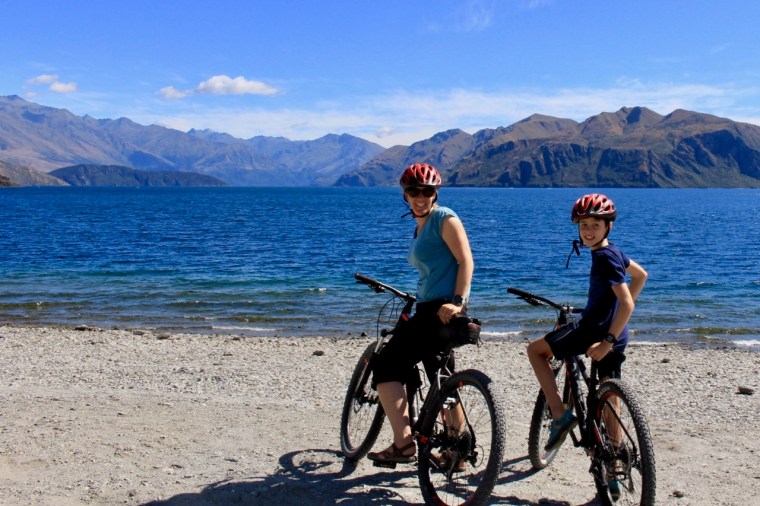


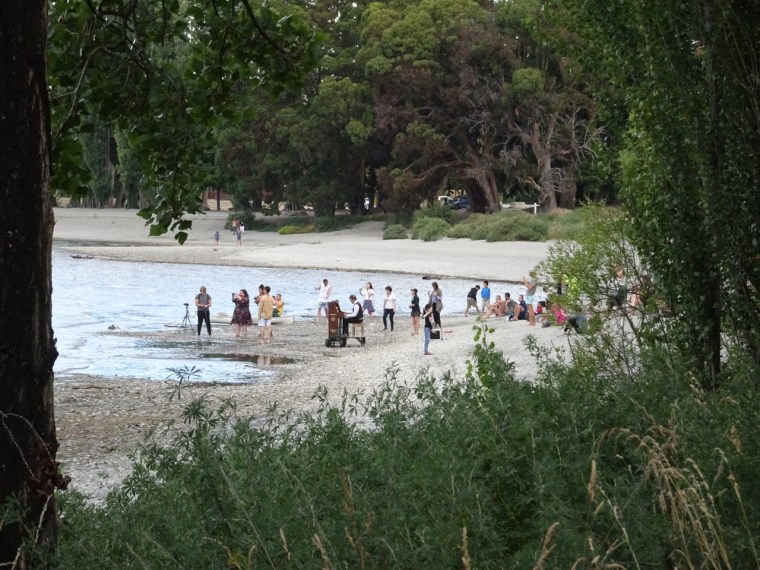

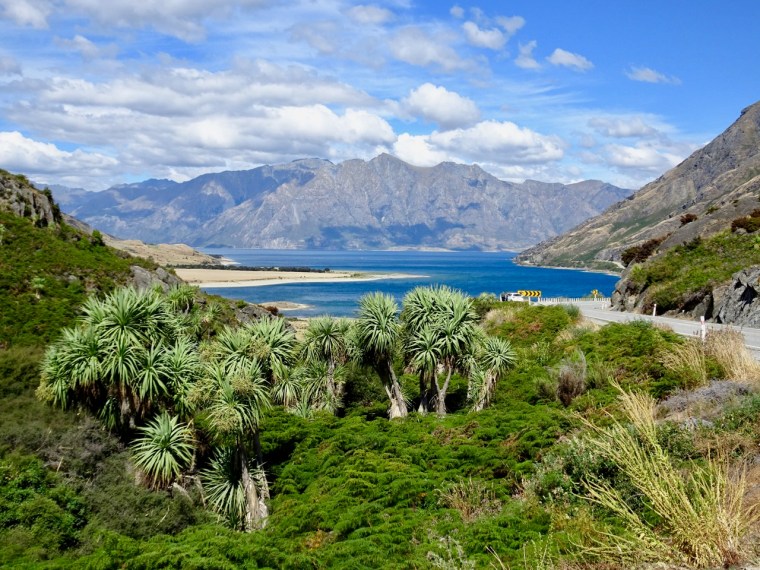
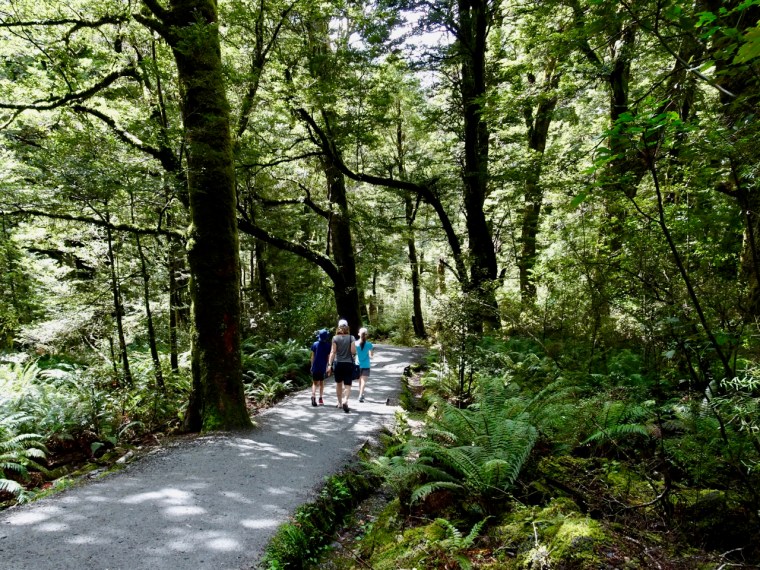

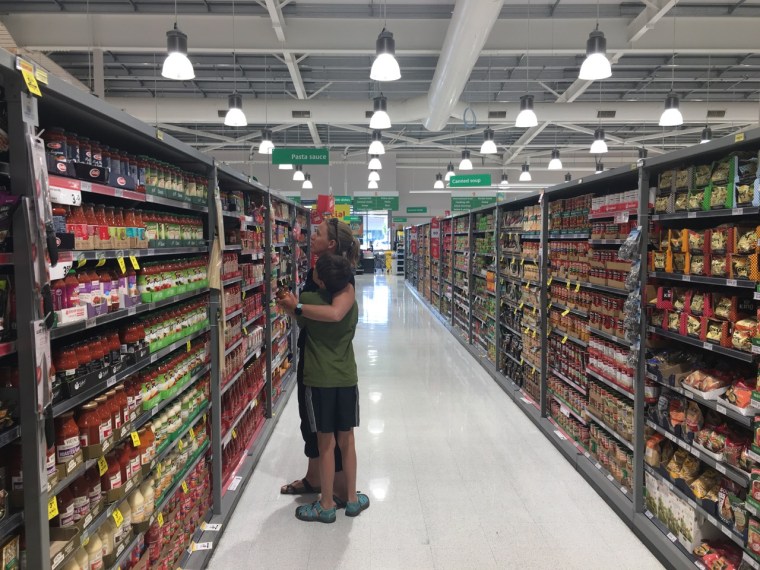
At Aoraki/Mount Cook:
- The weather was fine. So fine, the summit of Mount Cook was in view and so we took a walk up the Hooker Valley to the mountain’s base. The valley was huge, there were hanging glaciers, moraine fields and a glacially fed, boulder strewn river in which we held competitions to see who could keep their feet submerged in the icy water the longest. Amy won, but I think she cheated, because otherwise I would have won.
- We watched the hogs back cloud sit above the summit – a peculiar formation that sat there all day, sometimes blocking our clear view.
- Instagram’ers carted ball gowns and dinner suits up the 10-kilometre track, stripped down and put them on and took glamorous selfies with Mount Cook as a backdrop. It’s a thing. I don’t get it, but it’s a thing.
- A decade ago there used to be a massive glacier, over a kilometre long, where now there is a long muddy glacial lake with bergy bits floating around in it.
- Emma, Amy and I proved that all three of us could shower in less than 5 minutes. We did this because we only had one, one dollar coin to pay for a shower at the campground and that only brought us 5 minutes of water.
- Oliver didn’t have a shower… so business as usual.
- Emma teased me for pronouncing Te-Anau differently every time I said it. I couldn’t even get it consistently wrong. Te-Anoh, Te-Anoo, Te-Anow.



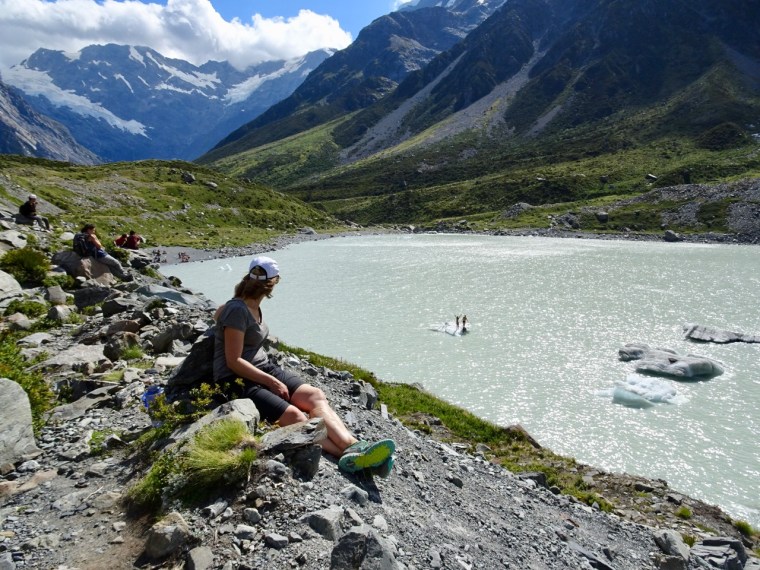


At Lake Tekapo:
- We found a caravan park on the edge of the lake, pitched our tent because the cabins were full and Amy and I went swimming.
- The water was cold and clear and did I mention cold? It was also that beautiful cobalt blue colour, like the Blue Pools were supposed to be, and for reasons unknown to me (because I am generally a wuss when it comes to cold water) I just couldn’t get enough of it. Amy will swim anytime, anywhere and so the two of us spent a lot of time in the water.
- Emma and Oliver read books on the shore while Amy and I pretended to be fish.
Lake Tekapo was as far north as we made it and on the way back into Queenstown we stumbled across the Kawarau Bridge bungee jump. I was excited, but couldn’t help pondering why paying $180 for 2 minutes’ worth of entertainment (at best), and possible death (at worst), seemed like a reasonable proposition. As we watched I imagined myself on the platform. ‘I got this’, I thought and in my mind I practiced how I would leap gracefully upward when it came my time to jump, throwing my arms back as I went and screaming like a fool. I went to book a jump, but there were no places left that day, which was a major anti-climax.
In Queenstown:
- We booked into an overpriced campsite by the Shotover River. Kiwi’s can spot a tourist from 12,000 miles and have refined and fine-tuned the art of milking them for all their worth. Queenstown, and to a slightly lesser extent Wanaka, have an amazingly diverse range of crazy things to climb up, slip down, fly through, paddle on, jump off and ride across, none of which are cheap. They even have a speed boat shaped like a shark that whips along, dives under the water and leaps into the air!
- We contemplated going on a jet boat ride but I was put off by the photos of William and Kate (of the Royal variety) plastered all over the shop front. Privilege by hereditary birthright gets up my nose. Emma was put off by the thought of moving through spectacular scenery at a pace which meant you would not see any of it and Amy and Oliver weren’t sure what they would have been signing up for or missing out on – so we didn’t go on a jet boat ride.
- We did sign up for a zipline tour through the forests on Bob’s Peak, the mountain behind Queenstown. While this wasn’t cheap either, when you combined it with a hike up the mountain and a morning tea at the top with spectacular views over Lake Wakatipu, it constituted nearly a full day’s entertainment – making it much better value than 20 minutes in a jet boat for the same number of hundreds of dollars. I enjoyed the zipline tour so much the guides offered me a job. They said I had just the kind of enthusiasm they were looking for. I think it was my rendition of ‘Take On Me’ while zipping through the trees upside down that did it.
- We went for lots more swims in the beautiful, refreshing, cool, waters of Lake Wakatipu and then sat around for hours building stone inukshuks (Inuit stacked stone cairn) before sitting back and taking pot shots to see who could knock them over the fastest. Oliver won most of the time, but I think he cheated, otherwise I would have won. A little post trip research suggests this was very poor form because in Inuit tradition, it’s forbidden to destroy an inukshuk!!


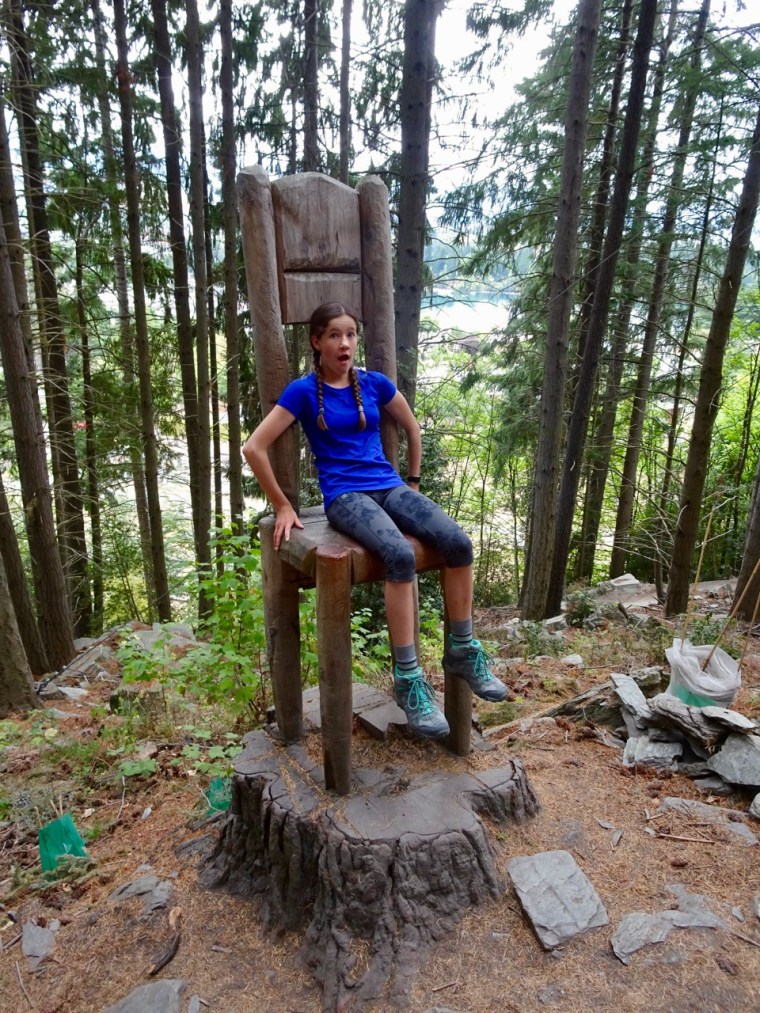



After Queenstown, we drove to Te-Anau where we picked up our tickets for the Milford Track and I asked the lady at the National Parks centre how to pronounce Te-Anau. She looked at me like I was weird but explained that it was Te-A-no. I walked out repeating it over and over again and then had to go back because I forgot to buy sand-fly repellent.
The Milford Track was the reason we came to New Zealand. It’s the finest walk in the world, just ask a local, if you can find one. Other than the guy at the customs counter I think everyone else we met was either a tourist or a European backpacker.
The Milford Track is 55 kilometres tackled over four days and is subject to a strict apartheid regime. On the Milford Track you are either an ‘Independent walker’ or a ‘Guided walker’. Independent walkers are discernible by their large packs, progressively deteriorating odour and fatter wallets. Guided walkers are discernible by their well-groomed, well rested and slightly superior airs and graces. Evening accommodation is well separated to ensure there is no cross contamination.
It was unseasonably hot the day we set off across Lake Te Anau to the start of the walk and by the time we had covered five kilometres to the first hut we were cooking. Fortunately the hut was but a short walk from a stunning bend in the Clinton River. Glassy, clear, aqua and green water tumbled over rapids, between boulders, beneath over hanging beech trees (and podocarp trees probably but I’m still not sure what they look like) and into a large still pool. It was even colder than Lake Tekapo, but so idyllic. We were in and out all afternoon (except Oliver… too cold for Oliver).
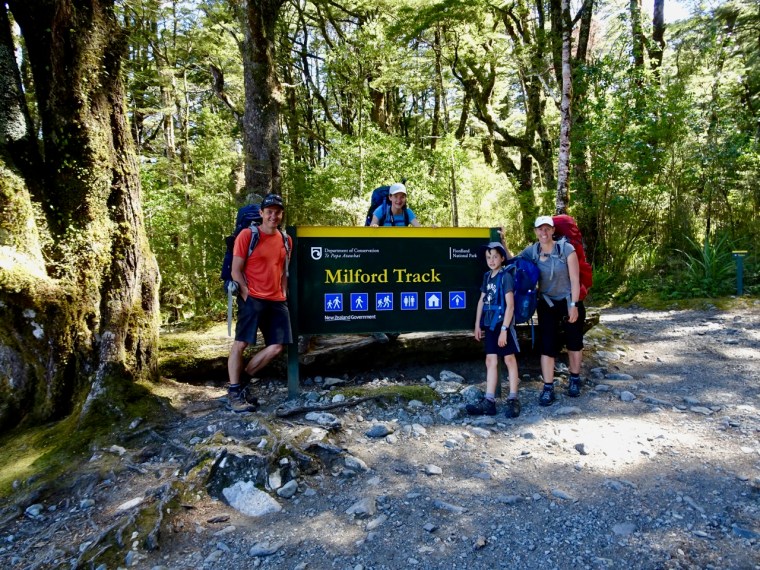

It was clear and hot the next day too, but the day after that a massive dump of rain was forecast. It was looking increasingly likely that this weather would arrive the day we were scheduled to climb out of the Clinton Valley, over the McKinnon Pass and down into the Arthur Valley. Fjordland receives a whopping 9 to 12 metres of rain every year. 9 to 12 metres! Canberra gets 600mm. The McKinnon Pass is nearly 1200 metres above sea level and that meant that the forecast rain was more likely to be a snow storm.
This was not my preference, because we had been looking forward to the spectacular alpine vistas for which the Milford Track and McKinnon Pass is known for. Hiking the Milford Track however is like riding a conveyor belt. You must move each day just the prescribed distance from one shelter to the next, and whether the weather coincided with our passing the Pass was up to the weather.
The Milford Track is a stunningly beautiful combination of temperate rainforest, rivers, lakes, plunge pools, water falls, glaciers, alpine meadows and sand-flies and if you go into it expecting to follow a groomed trail (for the most part) and sleep in bunk houses along with forty strangers snoring like chainsaws, it’s a very enjoyable outing. Previous experience told me that this track was well within our collective capability and so I didn’t even suffer from my usual pre-outdoor adventure nervous breakdown.


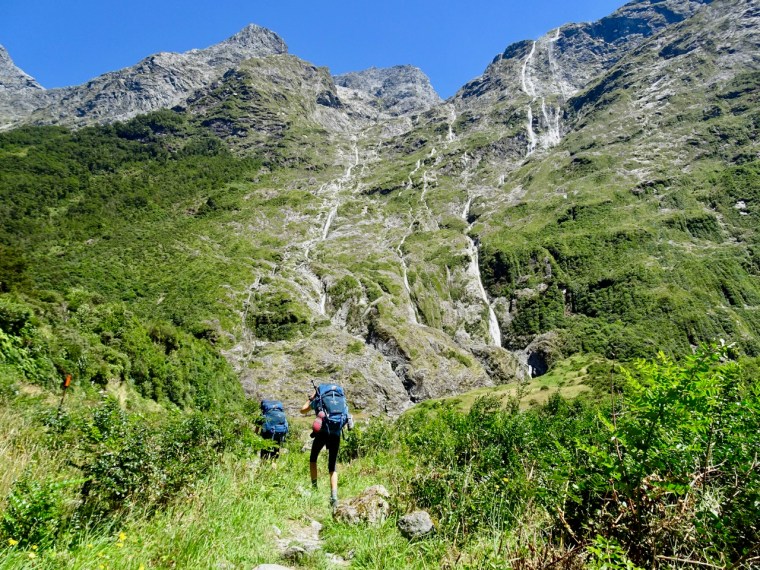
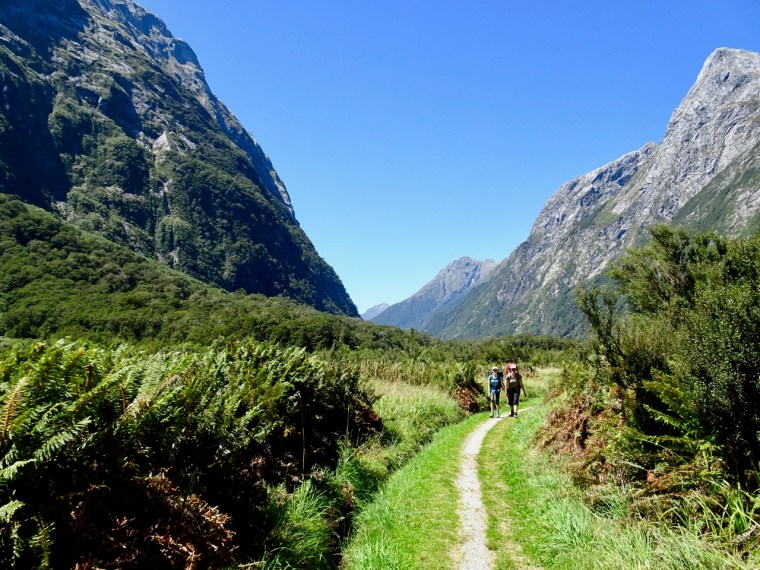
The same could not be said for all of those who set out on the track the same day we did. Not everyone who hikes the Milford Track should hike the Milford Track. Just because the track is smooth, flat and unmissable does not mean you don’t need a degree of fitness. Still, in two of the parties keeping the same schedule as us, one member of the group ended up carrying another’s pack just to get them to the other end. Tempers flared and bodies hurt, but fortunately not in our little group. We happily skipped along taking in the scenery, reflecting on group dynamics and trying to work out which of the other groups were least likely to snore.
We cleared the McKinnon Pass in swirling cloud punctuated by clear breaks which provided stunning views from a vantage point high in the alpine range. The rain was late and I wasn’t upset about that. It was the next day, our last day, that the heavens opened and for 18 kilometres it rained and it rained and it rained. Amy and Oliver ate lunch that day walking in circles to avoid the sand-flies which swarmed in inconceivable numbers every time you stopped moving.
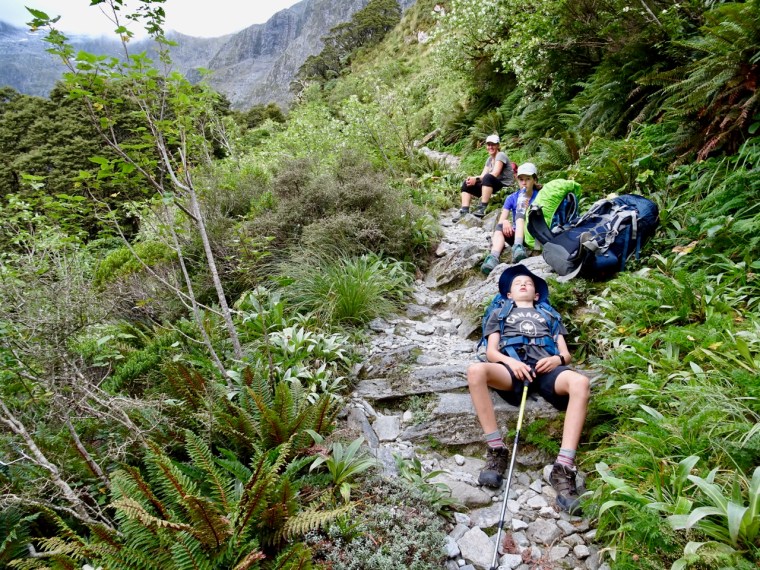
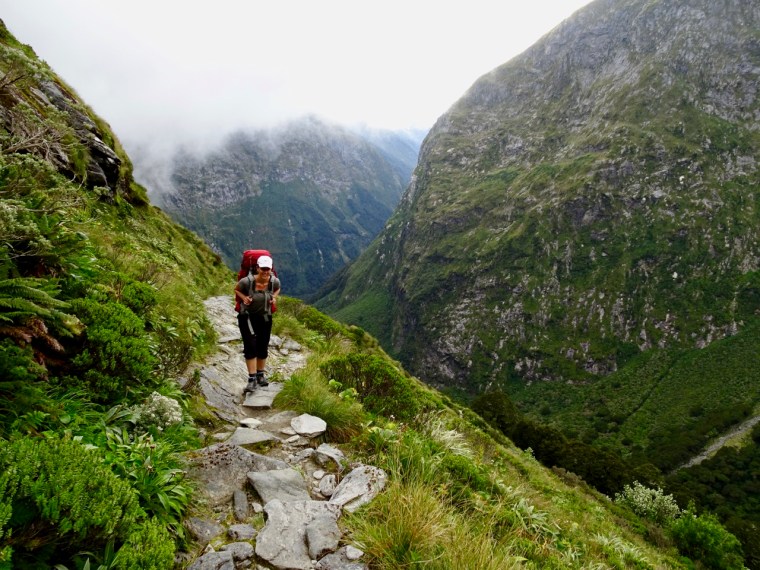

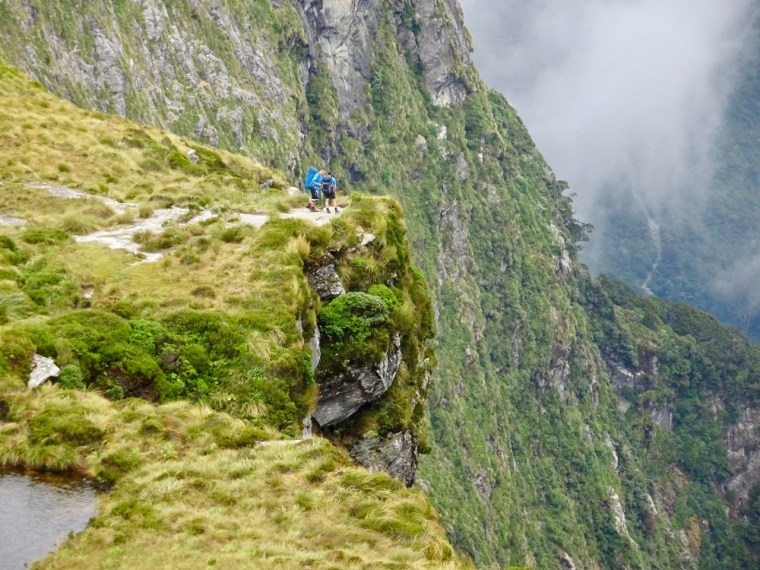

A few days back in Queenstown followed during which we just hung out. We ate very large pizzas followed by ice-cream while while marvelling at people with their feet strapped to jets of water on Lake Wakitipu. We also took a mildly scenic drive out to Glenorchy where we ate a picnic on a jetty and took a walk on the end of the Routeburn Track.



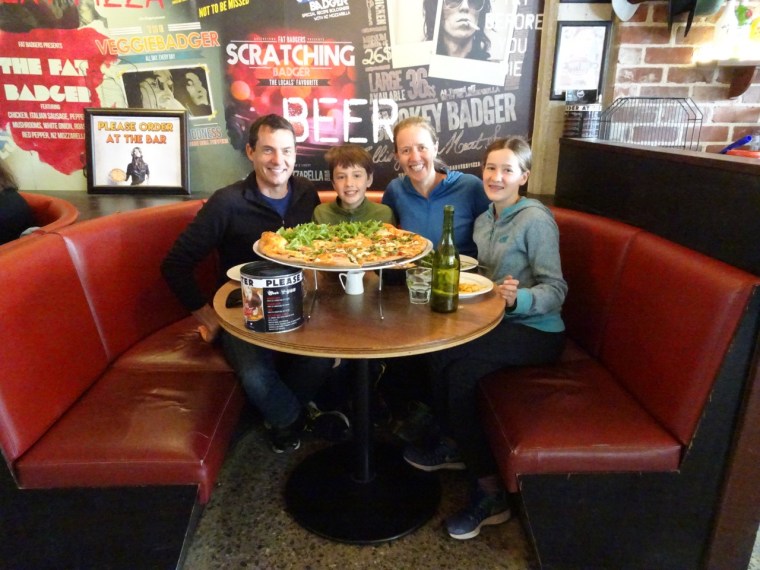
With all of this behind us time was running short and I still hadn’t leapt from a bridge. I made a booking online for the next day, still wrestling with the eye watering price tag. I figured that a bungee jump constituted approximately 2 minutes’ worth of entertainment, from the time you are strapped in to the time you are set loose. To experience those 2 minutes costs $180 which when converted to an hourly rate means you are paying $5,400 an hour!
Still, I figured, you either paid and jumped or left New Zealand without jumping and spending the next 30 years wondering what it would have been like. $180 over thirty years means that the daily cost of knowing what it’s like to jump off a bridge, instead of wondering, is just 1.6 cents per day. Bargain!
Come my turn, a towel was folded and wrapped carefully around my ankles after which the bungee cord was strapped to the towel. Then came the interesting part, the bungee people help you to your feet and shuffle you to the edge of the platform. Standing upon the edge of the platform I felt a lot less brave than I did moments earlier. Emma, Amy and Oliver however were watching. There was no going back and I rationalised that there was no risk, only the illusion of risk. I paused, waved and then leapt up and out. I threw my arms back just like I showed the man at the airport and hoped I had pulled off a stylish jump.
The world rushed up at me and adrenaline surged because all of a sudden I was falling in a most unnatural way. Clichéd though it may sound, time slowed down a little and then accelerated to catch-up and then it was all over. Six months later here I am sitting on my couch at home after work one evening, writing a blog and thinking… $180 was cheap.



____________________________________________________________________________________________
And because the Milford Track was so good below are some more photos.
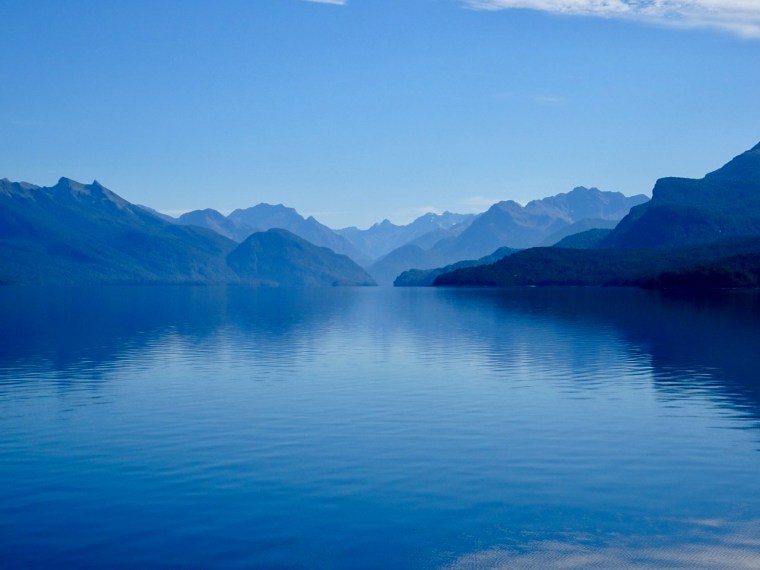





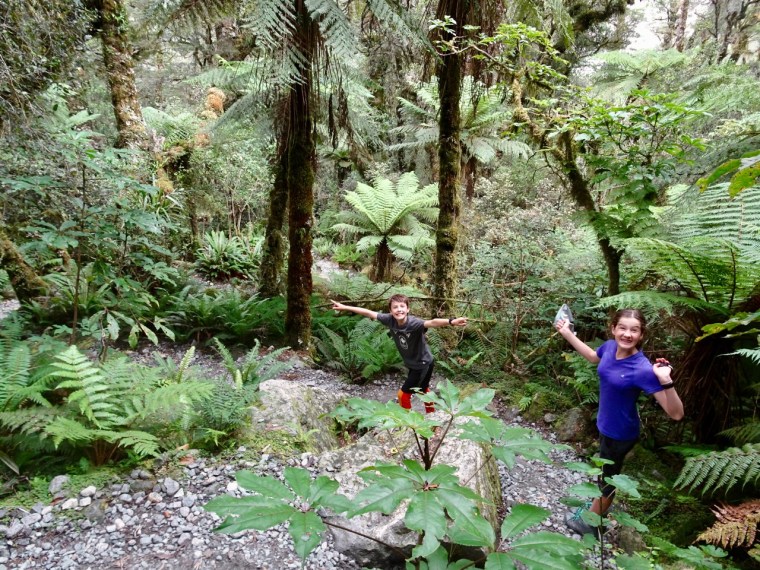

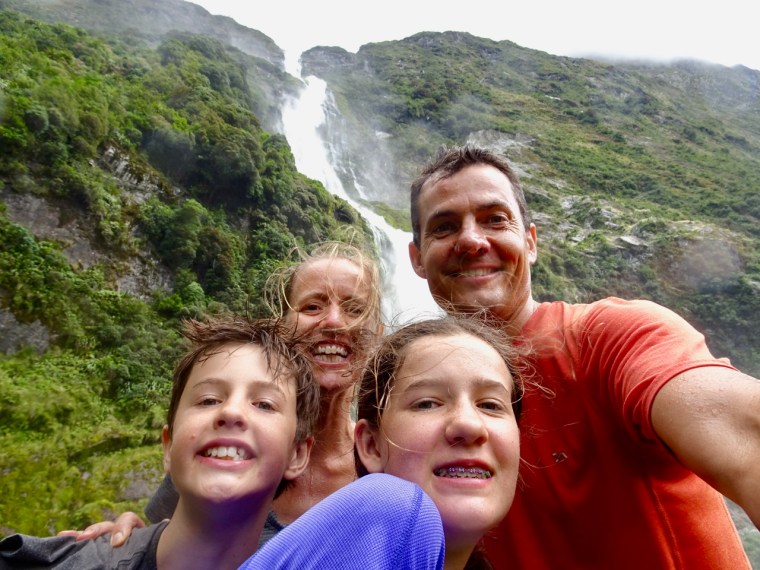
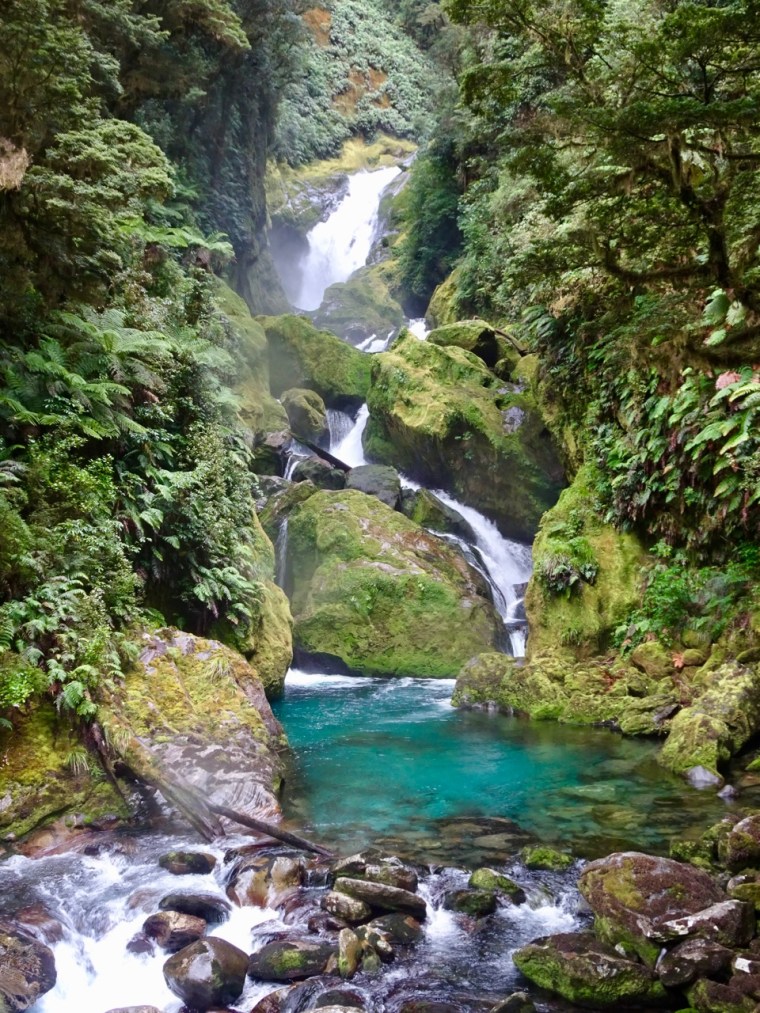





‘And forward…’
‘And forward…’ says Captain Jodi of the good raft Soggy McGee in her soft, gentle, good natured, Canadian voice (inflection lingering on the ‘and’ and dropping on the ‘forward’). Three or four strokes later it would be followed by, ‘…and stop’. With the inflection rising on the ‘stop’. Everyone loved being on board Jodi’s raft.
But I’m getting ahead of myself. Months before stepping aboard the Soggy McGee we were out for a walk in the wilds of Weetangera with the Atkins, when Paul mentioned he was thinking of rafting the Franklin as part of their upcoming Tasmanian adventure. ‘We’ve always wanted to do that’, fell out of my mouth before I’d thought it through.
If I had thought it through I may not have been so quick to lend the venture support. The Franklin is a crazy mixed up river. People have died on it and most commercial rafting outfits won’t take anyone under the age of 16.
Brett from Water By Nature was also clearly cautious and wouldn’t sign us up until Paul or Khia and Emma or I had spoken to him. He was not entirely sold on having 12 year olds (Evie and Amy) and an 11-year-old (Oliver) along for the ride. ‘How old are they again?’ he asked. Followed by ‘That’s quite young’. ‘There are lots of edges’, he kept telling me. ‘And if they fall into a rapid, well there’s sometimes not much you can do and if you can do something it will likely involve a helicopter’.
I found Brett’s concern with edges somewhat reassuring. Experience told me that if anyone was going to fall off an edge it was me, not Amy or Oliver, and I wasn’t worried about me. I was worried about the rapids. I had visions of Oliver being flipped out of a raft caught in a swirling, sucking eddy and drowning before my eyes.
Brett explained that 90 percent of the river is grade 2 and 3 rapids, but the other 10 percent (of navigable river) was grade 4. According to the international rapid grading system, grade 4 rapids, ‘have large waves and powerful confused, currents. Drops are big and stoppers can be large and unavoidable. Fast manoeuvres may need to be made. The route is not clear, and scouting may be needed. Suitable only for very experienced White-water paddlers…’.
All the grade 4 rapids could be walked around if desired, except for Thunderush. In my mind Thunderush went on for a half a kilometre with three metre standing waves, sunken logs and protruding boulders just waiting to pluck my children from my reach! Yikes. Emma and I talked it over, and then we signed up, because we’re like that. I get anxious, Emma calms me down, and then we do these things anyway.
Andrea, our friend from Canada (with much white-water experience) provided helpful advice. She sent me list of ten reasons why I was more likely to die than Amy or Oliver.
- Being anxious in a boat makes you more likely to move against the flow of the boat rather than with it. Amy and Oliver lack the good sense to be aware of their own mortality and that will serve them well. Hang on to one of them if you get anxious.
- Most (like 90%) of deaths in rapids happen because of foot entrapments. Amy is a swimmer. She will not let her feet sink down. It would go against her sense to swim. You on the other hand will more likely panic and sink like a stone. Sorry to say.
- Oliver’s underdeveloped prefrontal cortex will think it to be fun if he swims. He will be warm. If it were December here (Canada), that would be a worry. But as it is December there, he will think it a riot, and thus not panic. You on the other hand will more likely open your mouth to scream, water will rush in and… well.
- Amy and Oliver are good students. They will hang on every word the paddling instructors say. They are used to being students and thus absorb far more than those of us who have been out of school for decades. As you worry, you will likely absorb little of what is being said. I worry for you.
- Being 70 lbs is much preferable to being 165. (?). In a sticky hydraulic, they will get tossed up and down and side to side. Those are the weak spots. You and your girth will sink to the bottom where gravity likes to hold the dead weights. Sad but true.
- While your paddle strokes might be more forceful and effective your desire to move the boat rapidly will more likely have you tipping outside the boat in short order. The kids, far more likely to ‘lillydip’, will skim their paddles on the surface and thus not be likely to take a splash.
- Do be careful that when they reach to you with their paddles. You, in your panic are more likely to get pulled in rather than pull them out. So don’t do that. Swim to shore.
- Think like an insurance salesman. Adults are expendable, kids are a massive liability. The death of a kid is the kiss of death for an organisation. The guides will let you go long before they let go of Oliver.
- I got nothing.
- So, if you do wash away (and I still don’t think it likely) I will fly down to let them know that you are the hero. That it was really your concern for them that killed you. That’s a lot of pressure for a kid, so if you don’t want them to bear the weight of that, hang on to them.
All good advice and true, although I contend I hung on every word uttered by our guides with all due care, attention and diligence. After a night camping in the rain, four hour’s drive from Hobart and just off to the side of the Lyell highway where it crosses the Collingwood River, we ‘put in’ the following morning.

While managing to keep a lid on the vapours of my anxiety they were unable to be fully controlled. I drew comfort from Adrian (head guide) who noted as part of the pre-departure briefing, that what he was about to explain (about what happens when rafts flip and people go flying into fast moving water hundreds of kilometres from help) was very much akin to the pre-flight take-off briefing on a plane. All good stuff but almost universally unnecessary.
I wasn’t the only one with a few pre-trip, post safety briefing, jitters. Khia looked like she’d seen a ghost and while I didn’t know Todd and Sarah (parents from the other family that would be joining us for the float down the river) they weren’t all that chatty either following Adrian’s spiel. Emma, Paul and Dana by contrast seemed far less concerned and happy to get underway.
Jodi lightened the mood, declaring no-one could possible absorb any more information and directing us into her raft which we later named the Soggy McGee because she leaked profusely and required pumping with air regularly to keep her afloat. As the current carried us away Jodi instructed us in how to hold up our part of the rafting bargain. As ‘passengers’, our job was to provide locomotion. Mostly forward and hence the softly spoken command I began with. Sometimes backward and on the odd occasion (mostly after accidentally taking a rapid in reverse) one side forward and the other side back, to spin the raft around and go forward again.

I felt like I spent the first two days proving how slowly my brain operates on holiday, mostly paddling the opposite way to what Jodi called for and pausing for too long to think through the instruction.
Six kilometres downstream on the Collingwood and with only the occasional snag on the shallow river bottom (necessitating bouncing on the raft like a bouncy castle to help ease it over the impediment) we reached the intersection with the Franklin. It was pretty. Easily enough to overcome the drizzle and rain which continued for the most part throughout our first day. Unlike hiking, I figured it might as well rain as much as it liked given we were going to get wet anyway. Thing is though, when it’s raining it’s not sunny. And when it’s not sunny you get a little shiver that persists despite wetsuit and standard issue, jailhouse orange thermal undershirts. Songs about sunshine flowed freely as we floated along. ‘Here comes the sun, little darling…’ and ‘Sunshine, on my shoulder, makes me happy..’.
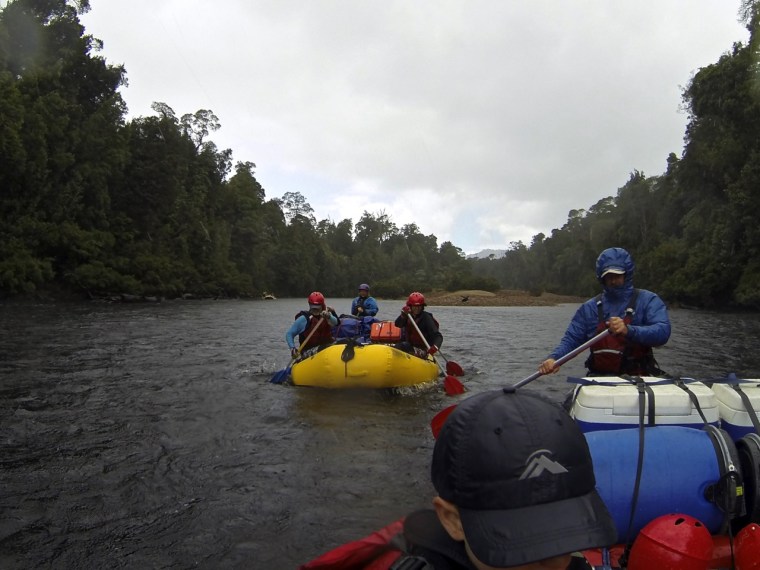

At Admiral Adrian’s urging we pushed on downstream through the beautiful Irenabyss and on to our first night’s camp on the Franklin at the base of Frenchman’s Cap. After unloading the rafts and stringing a tarp, wet, wet suits were changed for dry clothes and the shivers went away. Except for Dana, whose dry bag wasn’t quite sealed with predictable results.

Everyone’s heart sunk for her. No dry clothes. No dry sleeping bag. Uugh. Dana however, adventurous soul that she is, carried on cheerfully, refusing offers of assistance on the basis it was her own fault and refusing to be fazed. She spent the night alone under the tarp in a wet sleeping bag on a wet lilo while the rest of us were squirrelled away in tents. The next morning, bright and cheery she was the only one amongst us keen to climb a thousand vertical metres in the rain to the summit of Frenchman’s Cap – which we didn’t do. The tribe had spoken.
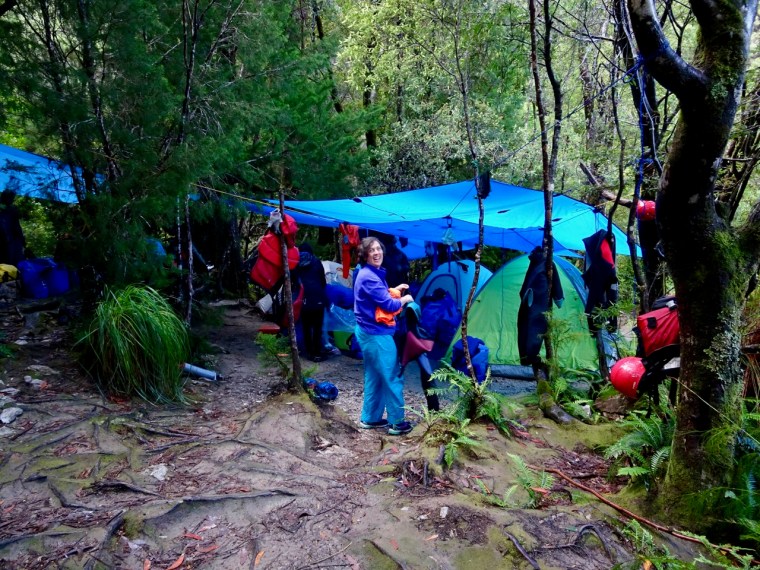

Admiral Adrian was, I suspect, delighted. Heavy rain overnight meant the river had spiked by over a metre and the Admiral was keen to ‘get his float on’. Day two is normally a slog with ‘normal’ river levels meaning equal part floating and exhausting dragging of boats over rocks. We however, kicked back and let the current carry us over gentle rapids which the rafts took easily in their stride.
I began to relax, no longer wedging my feet into nooks and crannies for traction and leaning into the centre of the boat ready to duck for cover every time ruffled water approached. It was like riding splash mountain at Disneyland only… real. A real, healthy, functional, natural, diverse and enchanting ecological wonderland. Thirsty? Stick a cup over the side and drink it down. The catchment of the Franklin is totally intact and the three metres of rainfall each year washes down nothing but tea tree tannins which make the river appear black, like flowing, glassy, obsidian with a trail of swirling white tea tree oil foam marking the swiftest moving water.

We camped that night beneath a tarp on a small clearing four or five metres above river. The sun came out while we set up and like lizards we gravitated to its warmth, sending the shivers packing. We played Pass the Pigs, ploughed through wheels of cheese and crackers and happily drank cask wine in plastic cups while Admiral Adrian held court with tales of rafting trips gone awry, being chased out of camps just like this one by floodwaters rising in the middle of the night and his girlfriend fending off a cougar with plastic fork.
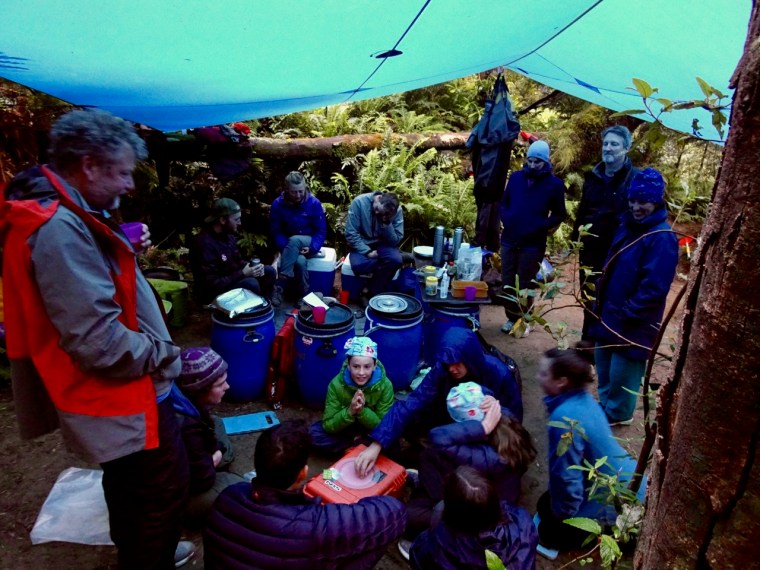
The next day was Christmas. Santa’s elves had hung candy canes from guy ropes overnight and I had a red hat with a white pom pom for the occasion. We celebrated with a cooked breakfast and a grade 6 rapid to start the day at the head of the Great Ravine. We climbed around the edges of the gorge while the guides carefully rigged the rafts on a 50-m rope and sent them ghosting through the thundering water while they held on, and we watched on, from the side.
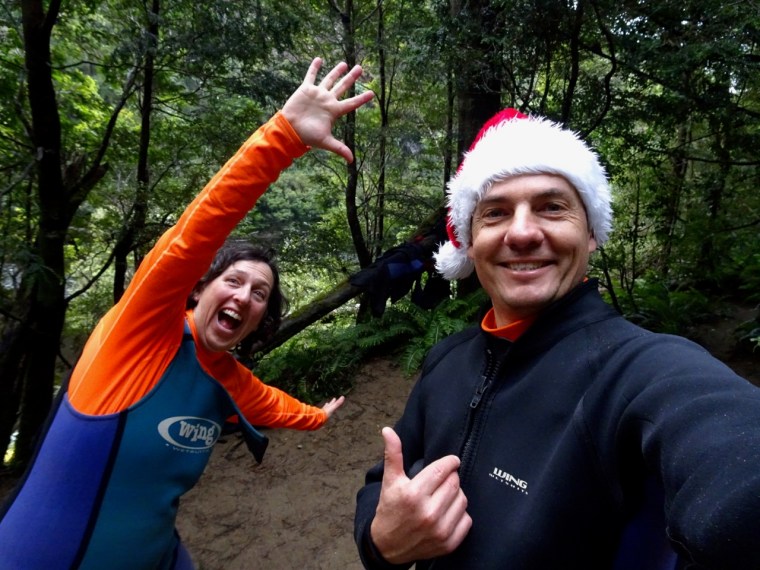
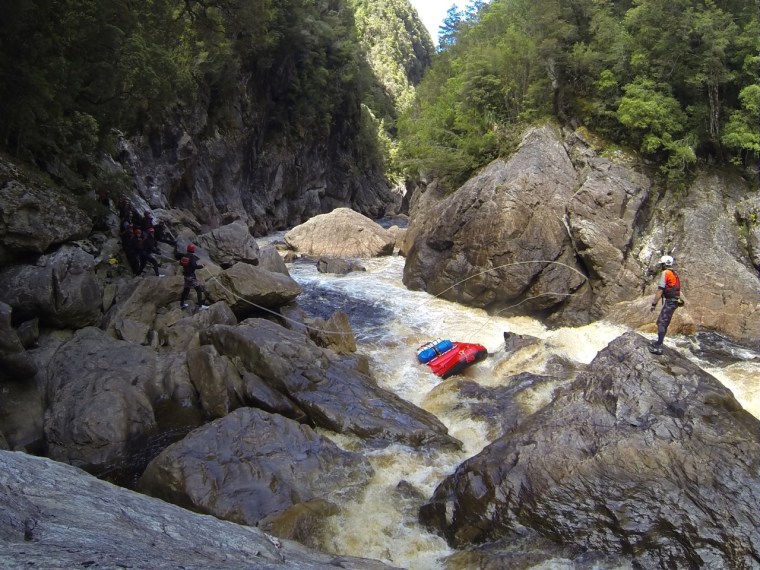
Then we ran the Corkscrew. A grade 4 rapid that we could have walked around but which everybody opted to run – some without hesitation, others after careful contemplation.
‘Just one ‘sieve’ which it would be bad to fall into at the top’, Admiral Adrian informed us. ‘But otherwise, if you flip you’ll just get washed out into that pool down the bottom’, he said.
Evie, who was sitting behind me, anxiously informed me she didn’t want to die and Khia gave me a look which suggested she didn’t want Evie to die either. I turned around gripped Evie’s knee and told her, more calmly than I felt, that this was what living was all about! She would die, but not today, and over we went.
One day blurred into the next after that as we travelled further downstream absorbed and ever more appreciative of our environment. There was so much to take in.
When it was raining, droplets of water, rebounding off the river, sat upon its surface before merging back into the flow. Up and down the river, martens dived and swerved in erratic unpredictable paths as they hunted for insects feeding on and above the water. Way up high on the ridges of the steep gorges the wind rustled trees which glowed in the sunlight. When it was still the forest was reflected on glassy black waters. Rounding a river bend our brightly coloured boats set cormorants to drag themselves out of the water and into the air. Approaching rapids, the smooth laminar flow of water funnelled into narrows and shallows and the ruffled water caught the light reflecting sky blue on a glassy surface of black. Waterfalls, some tall, some short, some steep and some flat cascaded over rocky surfaces which reminded me of carefully designed Japanese gardens, all covered with mosses and ferns and gnarled and twisted trees and shrubs. Petals from the flowers of leatherwood trees wafted down through the air to settle on the water and in the evening as we sat on the banks, fish leapt from the water as they hunted their prey.
The whole environment is serene and stunningly beautiful. Everything has a place and everything worked together, aesthetically, functionally, spiritually. You could live a happy and healthy life without experiencing a wilderness like the Franklin, but it would be missing something extraordinary. It filled up our senses and I felt so grateful to be there.



The Franklin of course very nearly ceased to exist in the early 1980s when Hydro Tasmania proposed to dam and flood the whole thing. The river at that point was only known, the way we were getting to know it, by a few brave pioneers who had risked life and limb to navigate it with gear not up to the task. Bob Brown and Peter Dombrovski were among them. They, and many others, somehow managed to shift the Franklin from backwater to front of the national consciousness, and against all odds, to prevent the whole place from being drowned.
In the foreword to, The Ever-Varying Flood (by Peter Griffiths and Bruce Baxter), Richard Flanagan says:
In the years that I am fortunate to once more journey down the Franklin River I find myself ever more moved, not just by the exhilarating beauty of this remote wild land, but that this land exists at all. For it is a miracle. In a world where the measure of almost all things is money and power, where so many of the greatest wonders – be they cities, buildings, art – so often exist as a tribute to money and power, the Franklin River exists because over a quarter of a century ago people stood up and said there were some things that mattered more than money and power.
Indeed there are and if wealth were measured by experience instead of things, then a trip down the Franklin would be worth far more than a few years of financial growth in a super fund. It does us all good to know such places still exist. It’s something else altogether to immerse yourself in it, in good company and with good friends. To drink in a healthy environment, figuratively and literally, to spend time in a place where the only obvious sign of people are small clearings where a group can fit side by side to sleep under a tarp in the rain.

We spent a rest day at Newlands on day six, camping in the shelter of overhanging rock caves that I was certain were going to collapse and crush us in our sleep (they didn’t). We entertained ourselves by exploring the river on foot, walking up stream to visit Rock Island Bend, made famous by Peter Dombrovski and starring in the campaign to save the river. We also spent time leaping off a rock platform into the river, playing games, reading books and marvelling at a spotted quoll as it explored our camp.
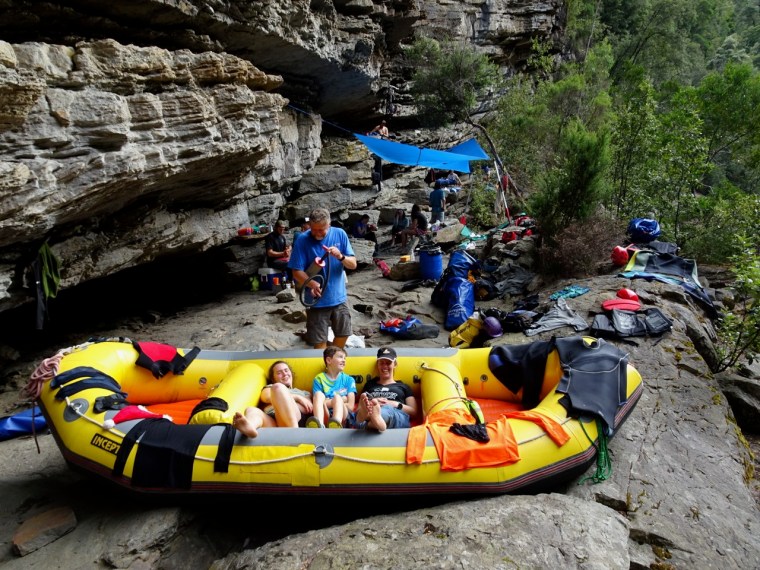



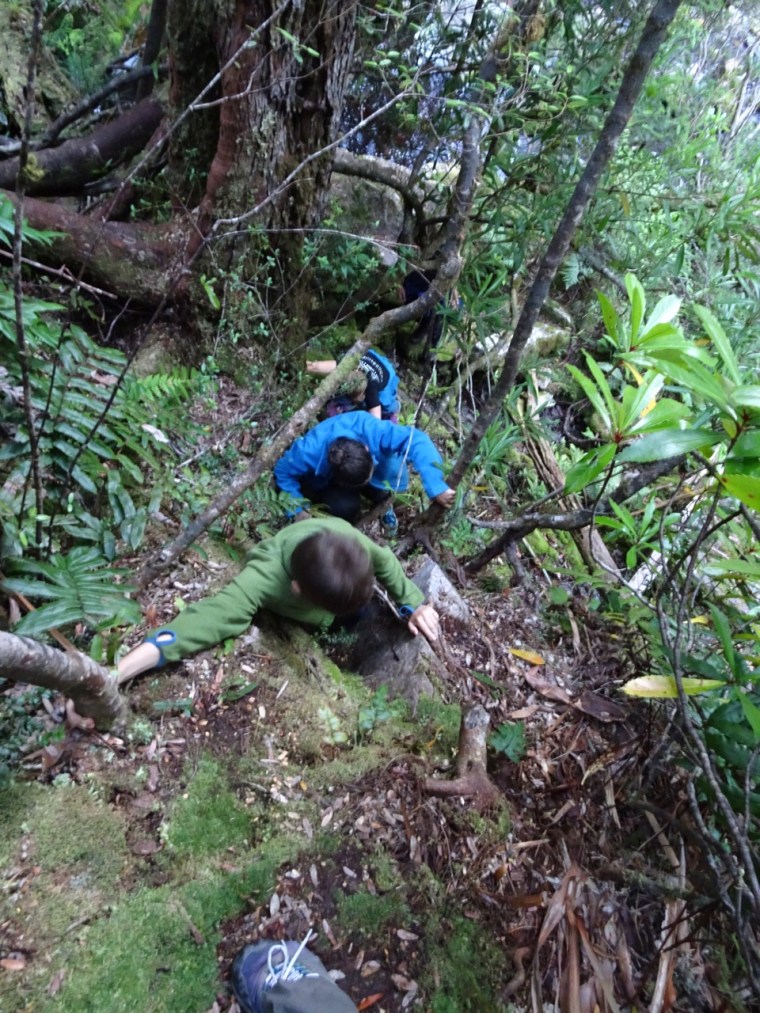
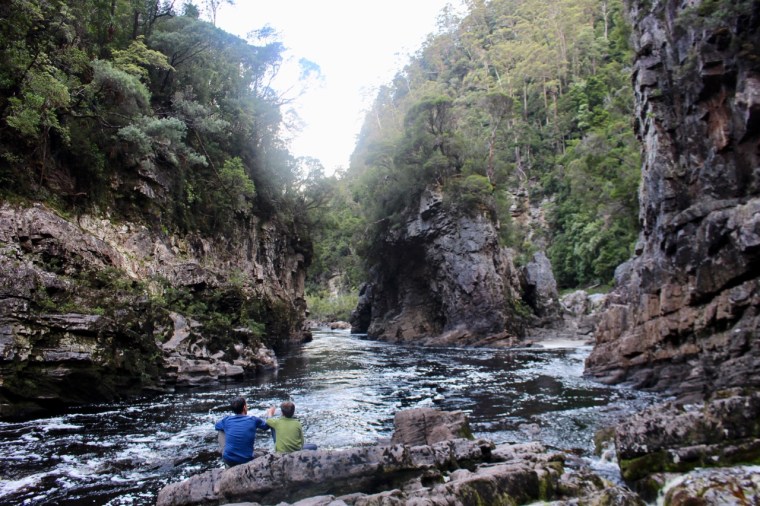
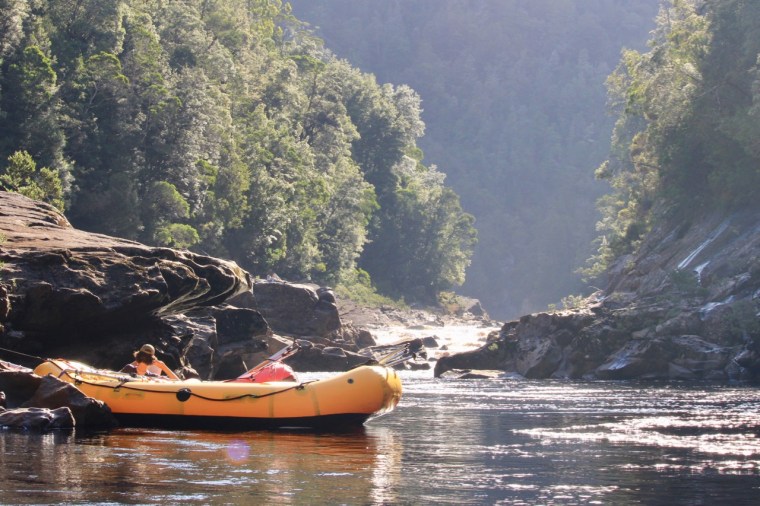
In the afternoon, we dragged a raft up river to run the rapid in front of our camp again, and again. My confidence that we would survive the river intact was almost undone on our second run when the river wrapped the big red raft around a rock, forcing one side of the boat upward and the other side down into the water which surprisingly quickly swept me, Evie, and Dana away, Paul held on to the back of the raft but was instructed to let go and head to the nearest rock. It was scary and fun at the same time. We were totally out of control but I did remember Admiral Adrian’s instructions and quickly got my feet up in front of me while barking at Evie and Dana to do the same.
Feet up, the river threw us over a couple of drops where we were submerged in fast flowing water and then spat out further downstream. ‘Carnage’ Admiral Adrian calls such events. Evie, Dana and I made our way to the side of the river when the water slowed, battered, bruised and a bit shaken. Then we watched as Captain Jodi pondered how to extricate Emma, Amy and Suade from their precarious perch. Paul was stranded on another rock in the surging water (see the great video captured by Rio below).


The next day we quickly dropped out of the upper Franklin and into the slower flowing, but possibly even more beautiful, lower river. Here we had to paddle to get somewhere, not just to avoid being wrapped around rocks in rapids. ‘And forward…’ from Captain Jodi became a much more common refrain. Still everyone liked being in Jodi’s boat because ‘And stop…’ usually followed more quickly soon after. Captain Jeff meanwhile developed something of a reputation amongst the crew for his addiction human induced forward motion.
Captain Jeff did tell jokes though to compensate.
What did the cheese say when it looked in the mirror? Haloo-me. (Haloumi – get it?). And, did you hear about the French cheese factory that exploded? There was De Brie everywhere. And, what do you call a man with no arms and no legs in a leaf pile? Russell. And, what do you call a man with no arms and no legs in a pot? Stew. And, what do you call a man with no arms and no legs hanging on a wall? Art. And, what do you call a man with no arms and no legs lying on the floor? Mat. And… so it went.
Admiral Adrian meanwhile told tales about the blockade to save the river and the life of river guide.
As we went we stopped to shower under waterfalls on the river edge, explore hidden canyons gushing with water as the rain fell and the Kuti-kina Cave, the latter of which proves Aboriginal occupation of the area going back a remarkable 15 to 20 thousand years, when this temperate rainforest was an alpine grassland. The cave was critical to the areas World Heritage listing. Hydro Tasmania came up with all kinds of crazy schemes to save it in their effort to have the dams go ahead. My favourite involved the proposed construction of a Perspex bubble around the cave with a series of ladders in shafts to allow archaeologists to descend beneath the waters of the proposed lake to access it.


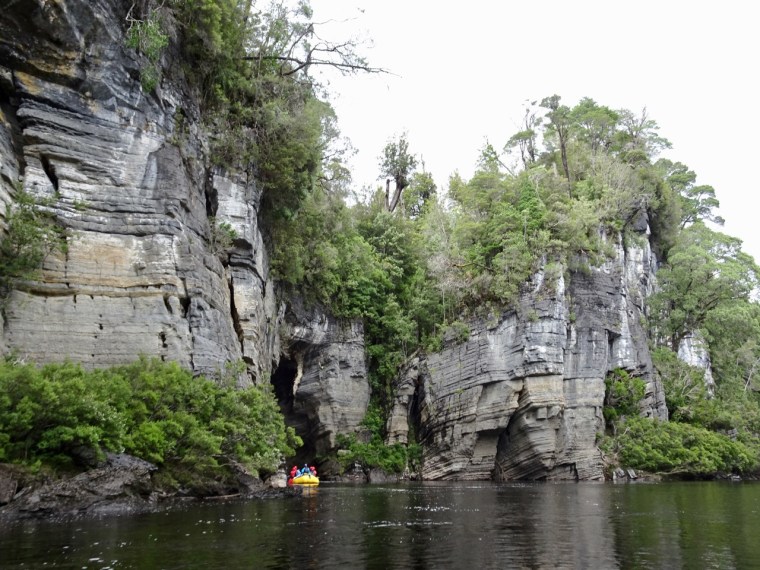


On day nine we paddled out of the Franklin and into the Gordon. Actually, most of us took part in an apparently, time honoured tradition and leapt overboard to make the transition from one river to the other. Once on the Gordon our three rafts were roped together to make our progress more efficient. Which was just as well as a head wind sprung up to painfully slow us down – still it was hard work.

As we passed the site of the proposed Gordon below Franklin dam, Admiral Adrian stood up unexpectedly, pulled a bottle of champagne from somewhere, popped the cork and posed a toast to Bob Brown and those who saved the 125-kilometre river we had just paddled. The champagne bottle was passed up and down the rafts until there were no more bubbles and we resumed our slog into the wind. An hour or so later we rounded a final bend with the jetty at Sir John Falls in sight. We paddled on until the jetty was nearly by our side and Jodi called…
‘And stop…’.
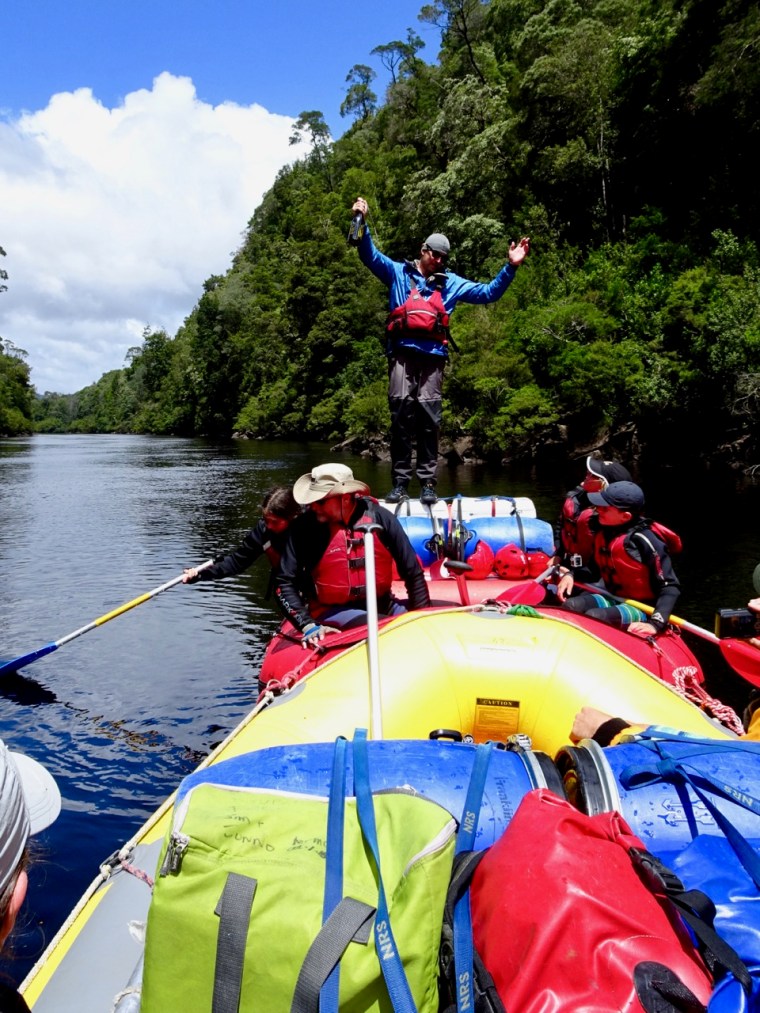
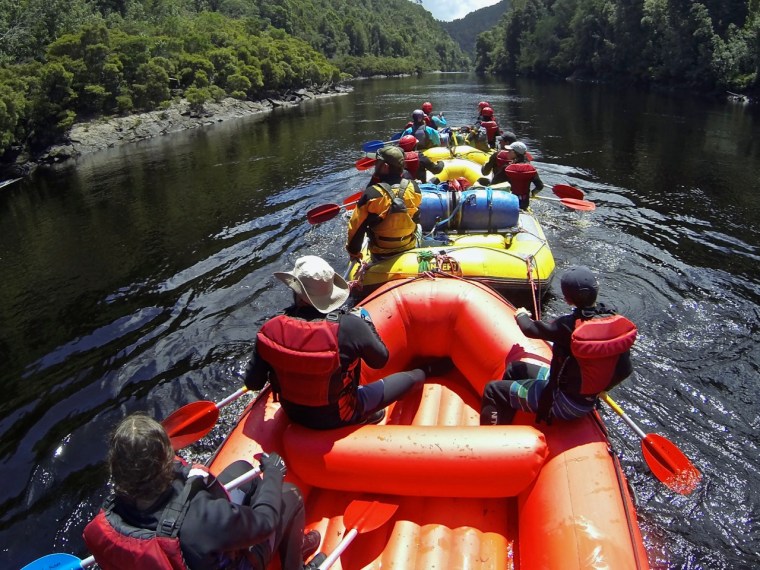
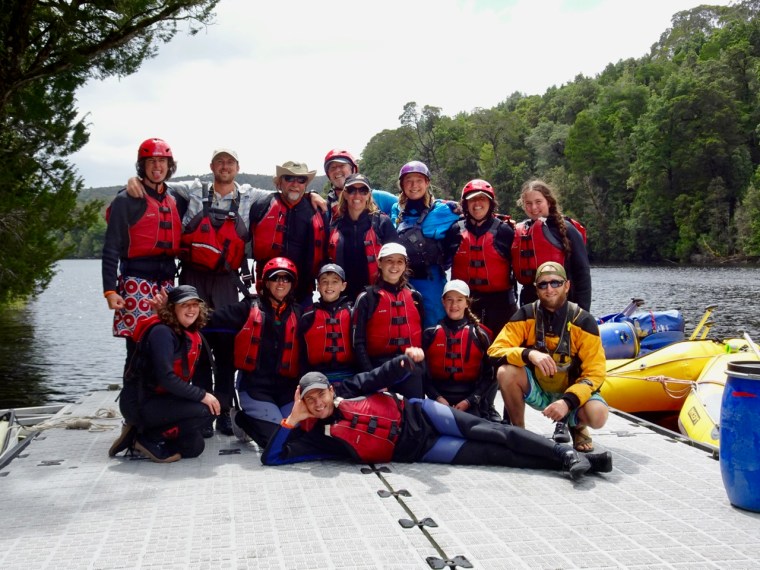
Post Script
We camped one last night beneath the big blue tarp at Sir John Falls before boarding the yacht the Stormbreaker for a relaxing journey down the Gordon, across Macquarie Harbour and into Strahan. Safely aboard the yacht I reflected on the second half of Andrea’s pre-trip counsel to me which went something like this:
So… can your kids die in a class 4 rapid. Yes. Will they? Likely not. What we all need to remember is that the risk of not taking them [to places like the Franklin] is greater than the risk of taking them. The world has created more ways for us to die (both literally and figuratively) than we are conscious of. There are so many traps for our hearts and our thoughts and we are falling into them all the time.
When you can offer your kids the world why would you offer a substitute? Because you’re afraid and it seems then that avoidance and ‘safety’ is the better option? [This is what I feel before every adventure we take.] It is far better, albeit a bit scary, to teach your kids how to feel real things so they don’t go looking for substitute thrills. Let them feel joy and fear simultaneously and help them learn how cope with both. Make sure they can feel fear and not feel intimidated by it. And maybe most important of all make sure your fear doesn’t debilitate them. Life is too short for that.
And because it was so beautiful, below are more photos from the journey.



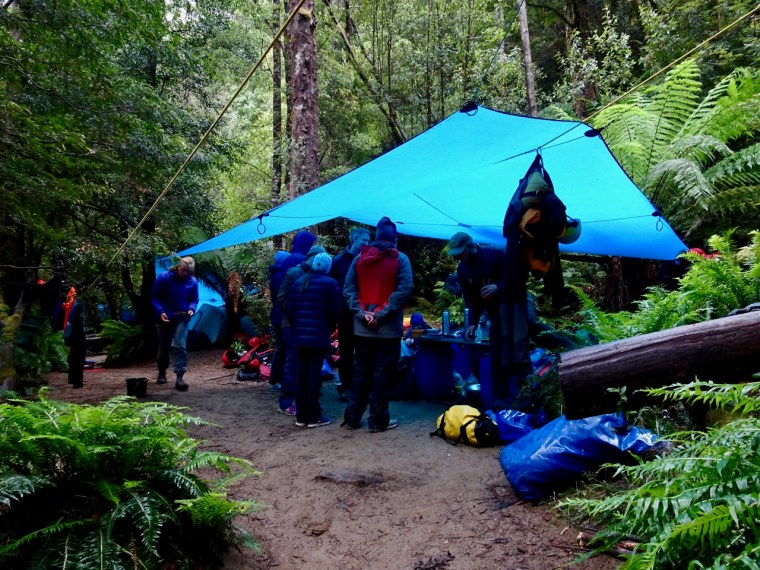




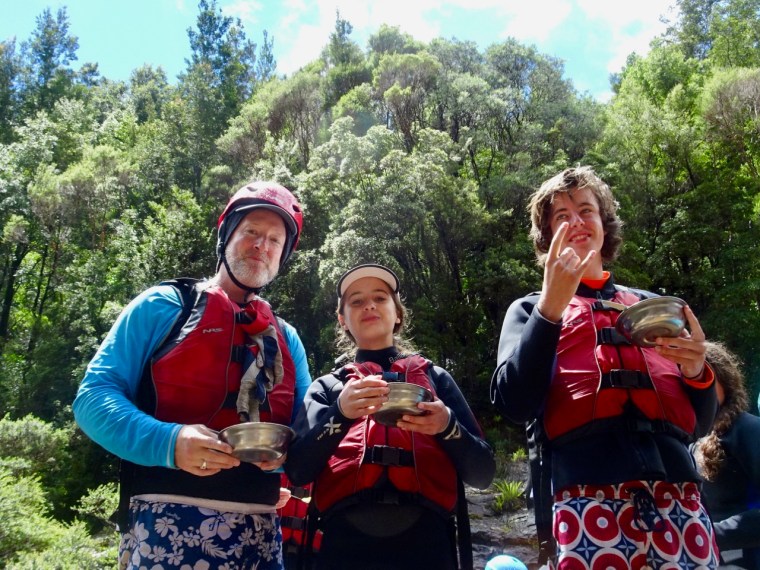







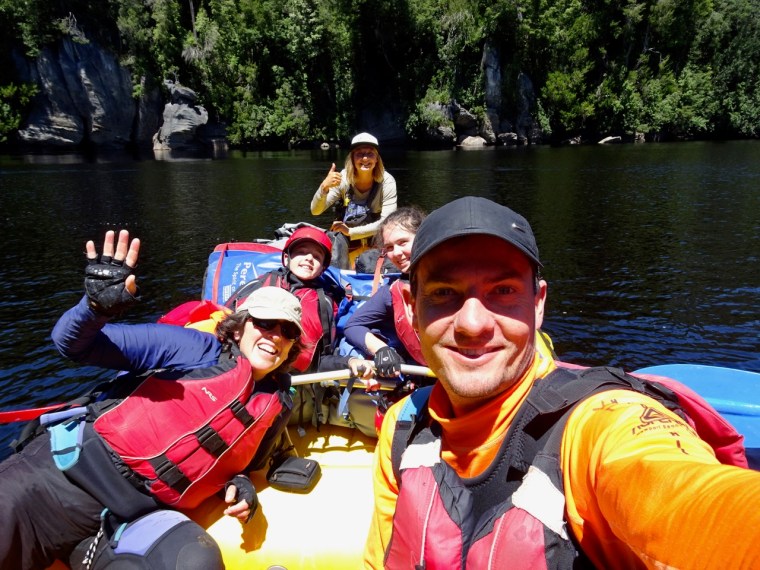





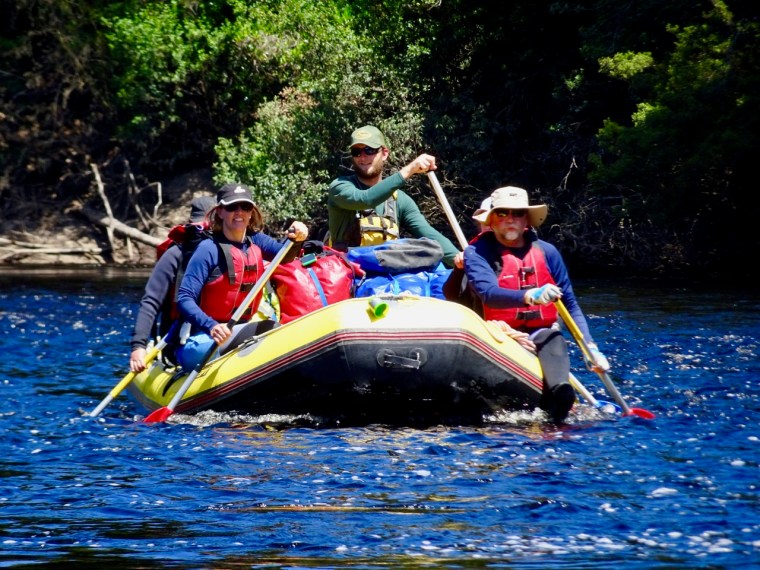



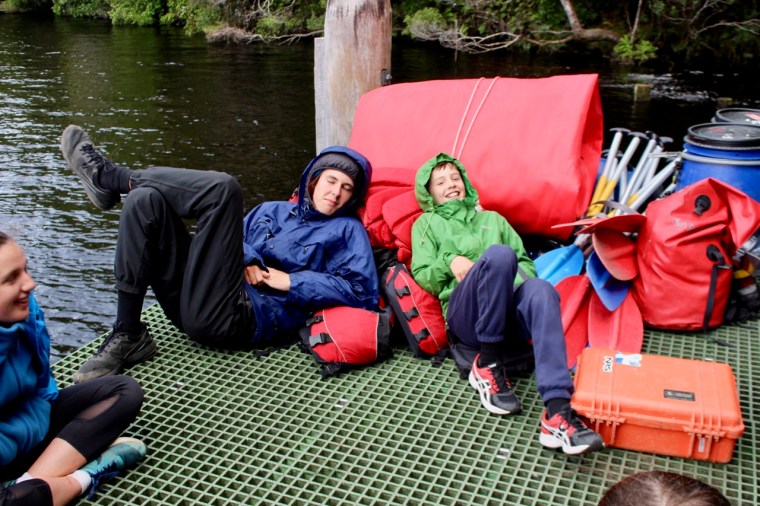
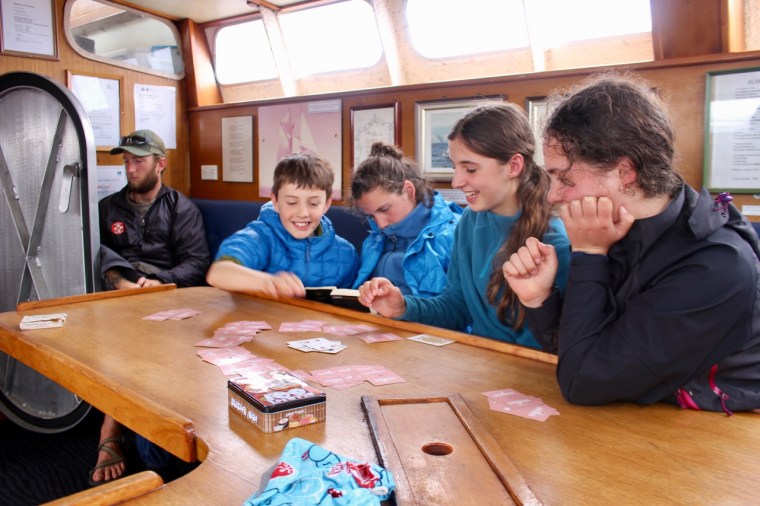
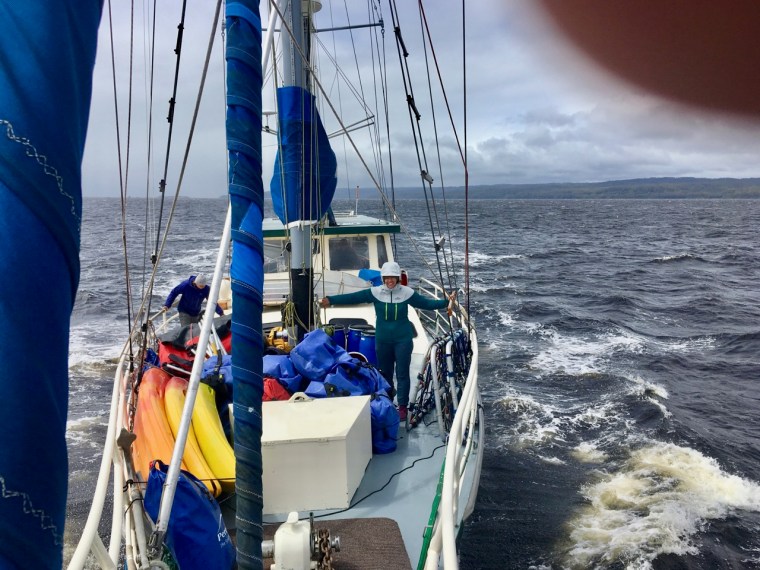
World the round world tour – the movie(s)
Trailer – World the round world tour 2016
Continue reading “World the round world tour – the movie(s)”
